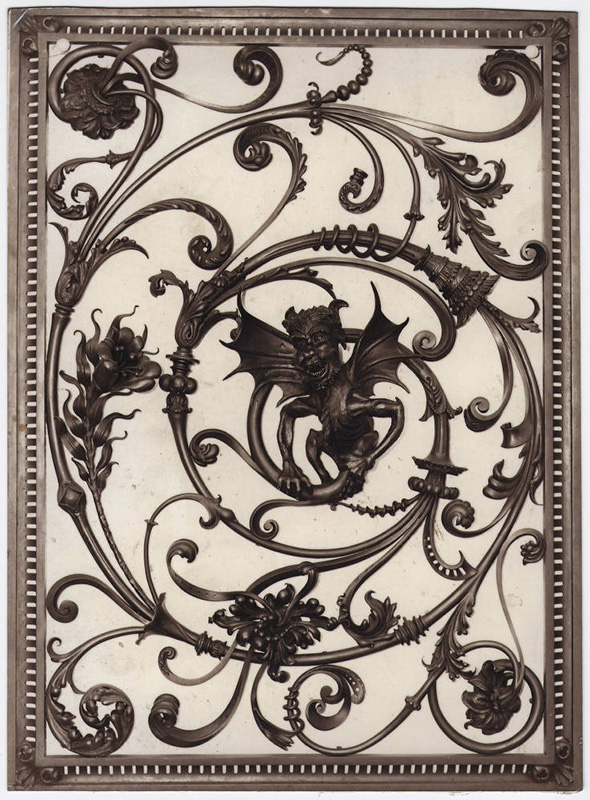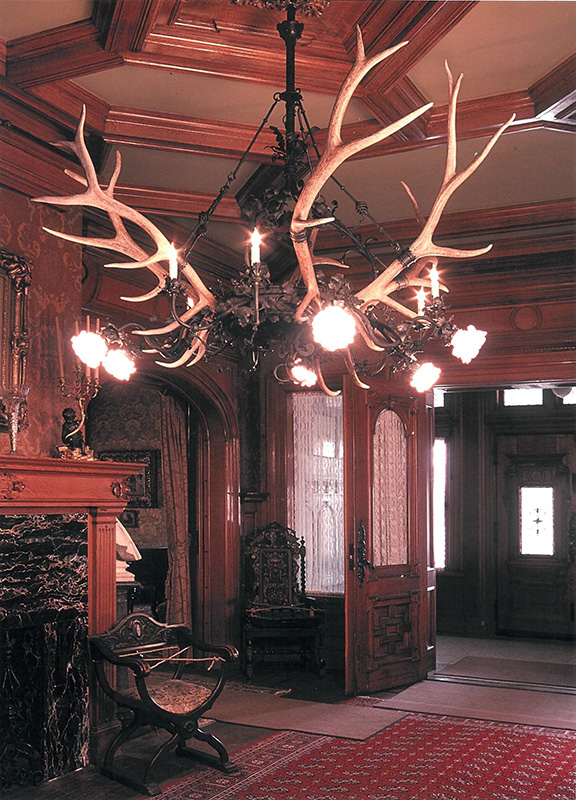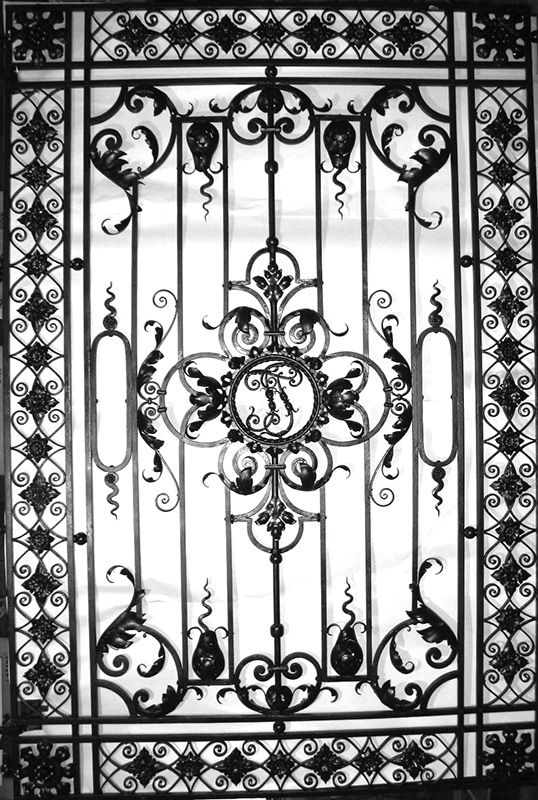The Mozart of Metal: Dan Nauman on 19th-Century Blacksmith Cyril Colnik
by John-Duane Kingsley
Nestled in the heart of Milwaukee, WI, is the Villa Terrace Decorative Arts Museum, home to the Cyril Colnik collection of decorative ironwork (figure 1). Revered as a master craftsman, Colnik’s workshop created thousands of public and private commissions across Milwaukee that act as a tribute to the city’s strong Germanic origins.
Colnik was born to a privileged Austrian family before training to become a journeyman blacksmith and joining the workshop of Reinhold Kirsch in Munich, Germany. Through Kirsch’s workshop, Colnik created a masterpiece firescreen (figure 2) with which he earned the title of master blacksmith and the opportunity to emigrate to the U.S. where his work would be shown at the 1893 Columbian Exposition in Chicago. Today, his masterpiece is as iconic a piece to forging as the Mona Lisa is to painting. He has been called a “Mozart of Metal,” a true virtuoso at an early age.
From Chicago, Colnik was drawn to Milwaukee by the strong German population and the rapidly industrializing city where a prosperous economy provided opportunities for commissions. Colnik’s German patrons shared an appreciation for the naturalism of his design sensibility and wished to consciously incorporate elements of European style into their homes and cityscape. As a result, Colnik created works that now reside in the Captain Frederick Pabst Mansion, the Herman Uihlein Mansion, the Paula and Erwin Uihlein Mansion, Mader’s German Restaurant, Von Trier German Tavern, and the Gallun and Kalvelage Mansions.
At Villa Terrace, the Colnik Collection captured the attention of contemporary blacksmith Dan Nauman, who received a grant in 1994 to photograph the collection and heritage sites throughout Milwaukee. These images were included in Alan Strewkow’s Cyril Colnik: Man of Iron. Nauman was also involved in the creation of “Forged Elegance: The Lifework of Master Blacksmith Cyril Colnik,” which debuted on Milwaukee and Wisconsin Public Television in 1998.
Since encountering Colnik’s collection, Nauman’s workshop, Big Horn Forge Ironworks, has been commissioned to recreate and restore some of Colnik’s masterpieces. He graciously offered to share some insights into Colnik’s genius.
Can you walk us through your process in recreating Colnik’s Elk Antler Chandelier for the Captain Frederick Pabst Mansion?
The original chandelier was sold to the owner of Von Trier German Tavern when the Catholic Archdiocese owned the Pabst Mansion. Once the Pabst Mansion commissioned me to make the reproduction (figure 3), I asked the owner of Von Trier if I could study the original, and he obliged.
After building the main frame, I studied each section individually and executed it before studying the next section in earnest. So, every time I began a new section, I returned to study and photograph the original at Von Trier. This methodology made the process much easier. Instead of embracing the whole piece, I merely chipped away at smaller sections one-by-one.
I tried veining the leaves initially by hand by driving a curved fuller into the leaf with a hammer. I then tried to achieve similar tooling using an arbor press. I also experimented with a treadle hammer. I tried veining the leaves hot, and I tried veining them cold. Many of today’s blacksmiths use only one or two leaf patterns when making a tree branch or a grape vine. But the human eye is good at detecting repetition, and Colnik must have known that. Like the original chandelier, his works don’t appear to have any repeated leaf forms. The leaves on the chandelier were cut from six different patterns and in three different sizes.
You’ve also had the opportunity to restore window grilles Colnik made for the Pabst Mansion. What challenges did you encounter in the restoration process?
I’ve restored ten grilles on the mansion, nine in the front and one very large one on the north side (figure 4) that measures 66″ x 99″. The north grille had numerous pieces that were stamped and many were made by the process of repoussé. Obviously, the stampings are no longer available, so I had to figure out the patterns by flattening some of the remnants.
Because the perimeter compound rosettes were so numerous, I had the patterns laser cut, rather than cutting them out myself with a band saw. Some of the details I put in by hand, while others were formed by top and bottom dies I made for a manual fly press.
Do you have any tips for readers who want to begin collecting ironwork?
I tell people to buy what they enjoy, not what they feel will increase in value. After all, you’re going to have to look at it every day and if you don’t like it, what’s the point? But also do your homework. Some smiths are extremely talented while others fall short, so it’s important to know how to distinguish the good, the bad, and the downright ugly by researching the great masters of previous centuries. Find experienced and educated smiths and have them direct you to those works that are truly well-designed and well-executed.
John-Duane Kingsley is a contributing writer for the Decorative Arts Trust and is a historic furnishings and interiors specialist in Michigan.
A print version of this article was published in The Magazine of the Decorative Arts Trust, one of our most popular member benefits. Join today!




